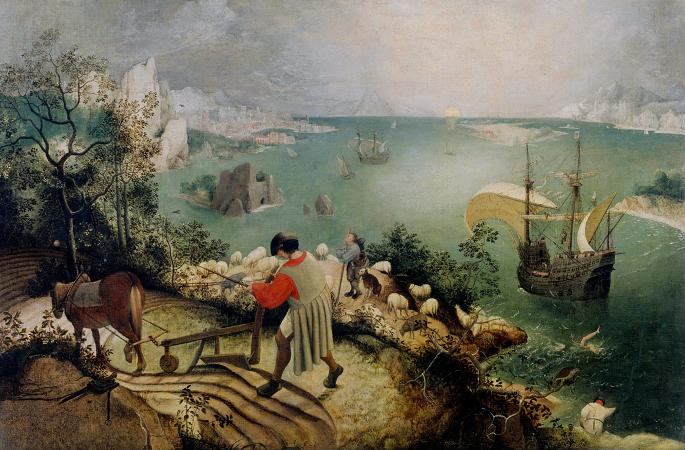Jacob Savery (1565 - 1603). Jacob Savery was a Flemish-born and trained painter, etcher and draughtsman who was active in the Dutch Republic after 1584. He specialised in still lifes, animals, landscapes en genre paintings. Jacob was born in Kortrijk into a family of painters. His fater was Maerten Savery. Jacob probably apprenticed with the Flemish Mannerist painter Hans Bol as was reported by the early biographer Karel van Mander. As Anabaptists, the family Savery was forced to leave their native Flanders for fear of Spanish persecution c. 1580. Jacob Savery settled about 1584 in Haarlem and from there he moved to Amsterdam where in 1587 he joined the Guild of St Luke. In 1591 Jacob became a citizen of Amsterdam. He died of the plague in Amsterdam. The biographer Arnold Houbraken, who wrote a biography on his brother Roelant Savery, made a mistake when he wrote that Jacob was the father of Roelant and taught him to paint animals and fish, since Jacob was his older brother, not his father. He was the teacher of Joos Goeimare, his brother Roelant Savery, Frans de Grebber and Willem van Nieulandt II. His three sons also became artists: Hans Savery II was active in Amsterdam and Utrecht, where he assisted and imitated his uncle Roelant, Jacob Savery II was an animal painter and Salomon Savery was a respected Amsterdam printmaker and publisher. Jacob Savery II's son, Jacob Savery III, also became a printmaker and publisher. Jacob Saverys' daughter Maria was the mother of the painters Geertruyd Roghman, Roelant Roghman and Magdalena Roghman. Savery died in Amsterdam in 1603. Jacob's earliest known works of 1584-6 are mostly cabinet-size landscapes that clearly show the influence of his master Hans Bol. In Amsterdam Jacob was active as painter, etcher and draftsman. He produced a series of etchings in Pieter Bruegel the Elder's stipple technique depicting idealized rural scenes full of picturesque details, such as castle ruins and rabbit hunts. It is believed that Jacob also produced forgeries of Bruegel's pen-and-ink drawings of mountains and rural or Amsterdam subjects by adding false Bruegel signatures and dates between 1559 and 1562. These works have now been attributed to Jacob himself. His genre paintings of low-life scenes are similar in style to Bruegel. Jacob Savery also painted landscapes that were influenced by Gillis van Coninxloo who worked in Amsterdam from 1595. Despite contemporary references to his flower paintings no examples have been identified. Jacob's animal paintings, with their abundance of creatures, adopt a near naturalistic approach. This new approach to animal painting likely played a role in his brother Roelant's development of animal painting into an independent genre.
more...












